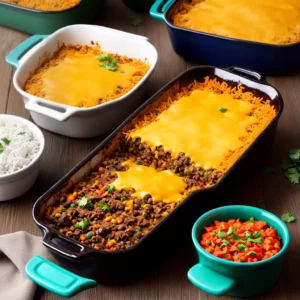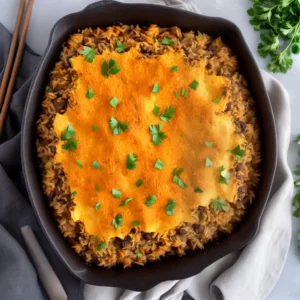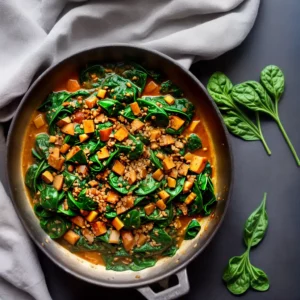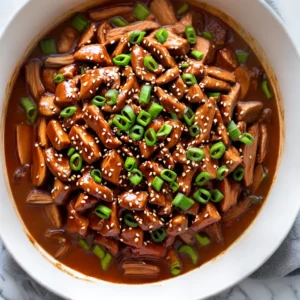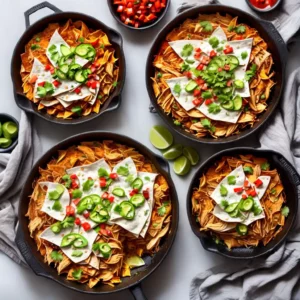How Many Milliliters in a Quart
Are you wondering about the conversion between quarts and milliliters? Look no further – this comprehensive measurement conversion guide will answer all your queries.
Quarts and milliliters are both units of measurement used to quantify liquid volume. Quarts are part of the imperial system, primarily used in the United States, while milliliters are part of the metric system, used globally. Understanding the relationship between these two units can be useful for various applications, such as cooking, scientific experiments, and everyday measurements.
How Many Milliliters in a Quart – Key Takeaways:
- A quart is equal to 32 fluid ounces or 946 milliliters in the imperial system.
- To convert quarts to milliliters, multiply the number of quarts by 946.
- To convert milliliters to quarts, divide the number of milliliters by 946.
- Understanding the conversion between quarts and milliliters can help in precise measurements for cooking and other activities.
- Online conversion tools are available for easy and accurate conversions.
With this measurement conversion guide, you’ll be able to effortlessly convert quarts to milliliters and vice versa, ensuring accurate and consistent measurements in your daily tasks.
Understanding Quarts and Milliliters
Before diving into the conversion, let’s understand the units involved – quarts and milliliters. Quarts and milliliters are both units of volume measurement, but they belong to different systems. Quarts are primarily used in the imperial system, while milliliters are part of the metric system.
In the imperial system, a quart is equal to 32 fluid ounces or approximately 946 milliliters. It is commonly used in the United States for measuring liquids such as milk, water, and oil. On the other hand, milliliters are widely used around the world and are based on the metric system, which is the standard system of measurement in most countries.
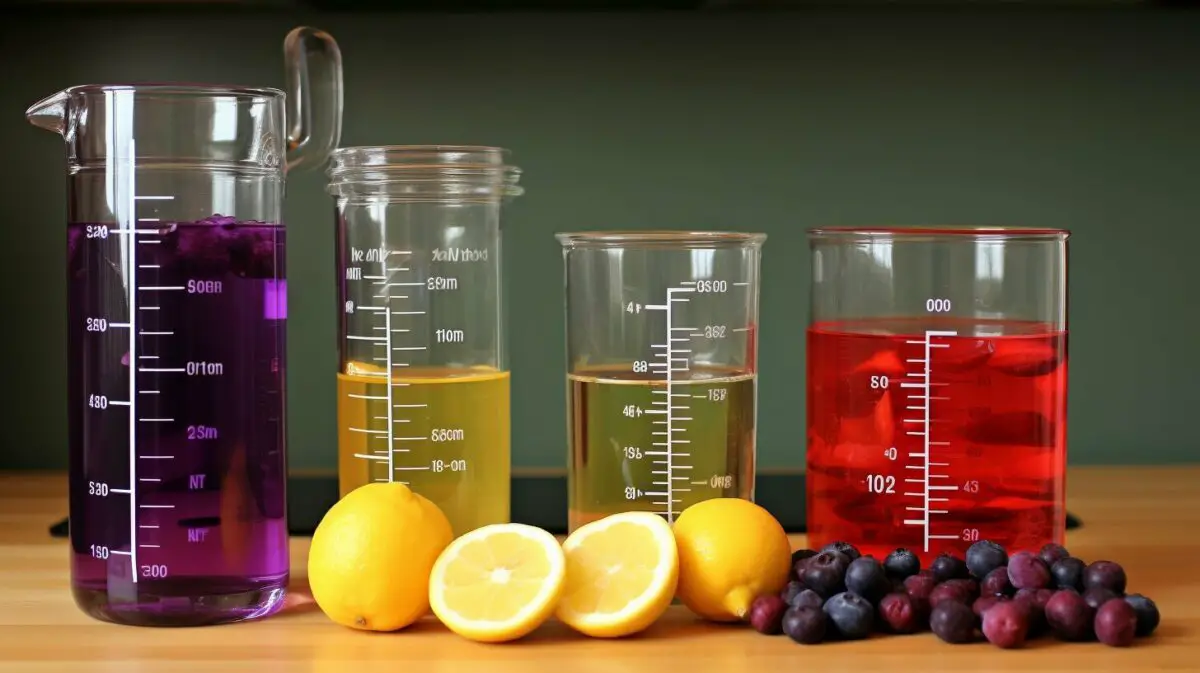
Understanding the relationship between quarts and milliliters is essential when it comes to converting between the two. The conversion factor for quarts to milliliters is 946, meaning that one quart is equivalent to 946 milliliters. To convert quarts to milliliters, simply multiply the number of quarts by 946. Conversely, to convert milliliters to quarts, divide the number of milliliters by 946. This conversion is particularly useful for recipes and other situations where precise measurements are necessary.
In summary, quarts and milliliters are units of volume measurement, with quarts being part of the imperial system and milliliters belonging to the metric system. Understanding the relationship between these units and knowing how to convert between them can be valuable in various contexts, from cooking to scientific experiments.
The Relation Between Quarts and Milliliters
Quarts and milliliters are related in terms of their liquid quantity and capacity – let’s explore the exact conversion ratio. In the imperial system, a quart is equal to 32 fluid ounces or 946 milliliters. This means that 1 quart is equivalent to 946 milliliters, making milliliters a smaller unit of measurement than quarts. The relationship between quarts and milliliters is crucial when it comes to accurately measuring liquids, especially in cooking and scientific experiments.
To convert quarts to milliliters, you can simply multiply the number of quarts by 946. For example, if you have 2 quarts of water, the equivalent in milliliters would be 2 multiplied by 946, which equals 1892 milliliters.
On the other hand, to convert milliliters to quarts, you divide the number of milliliters by 946. For instance, if you have 2000 milliliters of milk, dividing by 946 gives you approximately 2.1134 quarts.
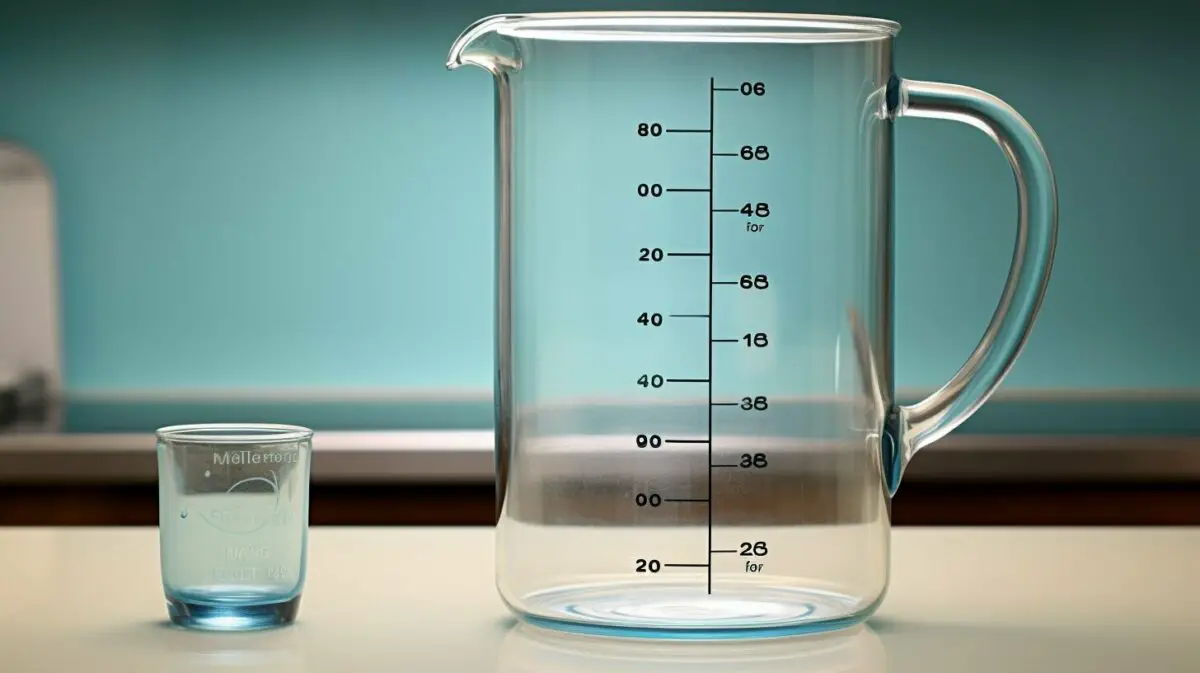
Conversion Table: Quarts to Milliliters
| Quarts | Milliliters |
|---|---|
| 1 | 946 |
| 2 | 1892 |
| 3 | 2838 |
| 4 | 3785 |
| 5 | 4732 |
Having a clear understanding of the relationship between quarts and milliliters is essential for anyone dealing with liquid measurements. Whether you’re cooking a recipe that requires precise amounts or working in a scientific laboratory, knowing how to convert quarts to milliliters and vice versa ensures accurate results. Remember, 1 quart is equal to 946 milliliters, making milliliters a smaller unit of measurement than quarts.
Converting Quarts to Milliliters
If you need to convert quarts to milliliters, follow these simple steps to calculate the accurate equivalent.
- Gather the number of quarts you want to convert.
- Multiply the number of quarts by 946.
- The result will be the equivalent value in milliliters.
“Converting quarts to milliliters is as easy as multiplying the number of quarts by 946.”
For example, let’s say you have 2 quarts that you want to convert to milliliters. By multiplying 2 by 946, you would get 1892 milliliters as the equivalent value.
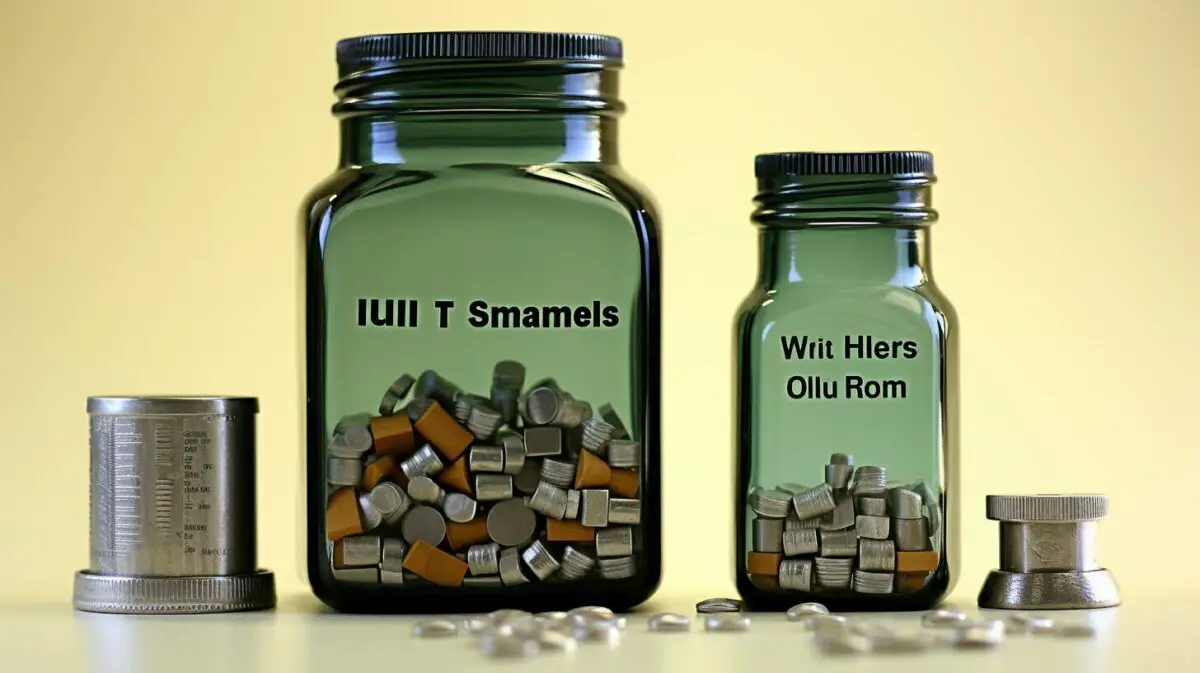
Using this conversion method, you can accurately determine the milliliter equivalent of any given number of quarts. Remember, 1 quart is equal to 946 milliliters in the imperial system.
Example Conversion: Quarts to Milliliters
Let’s run through an example to convert quarts to milliliters for a better understanding of the conversion process. Say you have 3 quarts of liquid that you want to convert to milliliters. To do this, you can use a simple formula: quarts multiplied by 946 (which is the equivalent of 1 quart in milliliters). So, in this case, 3 quarts multiplied by 946 equals 2838 milliliters.
To visually represent the conversion, let’s take a look at the following table:
| Quarts | Milliliters |
|---|---|
| 3 | 2838 |
As you can see, by multiplying the number of quarts by 946, you can easily convert quarts to milliliters. This method can be applied to any number of quarts you want to convert.
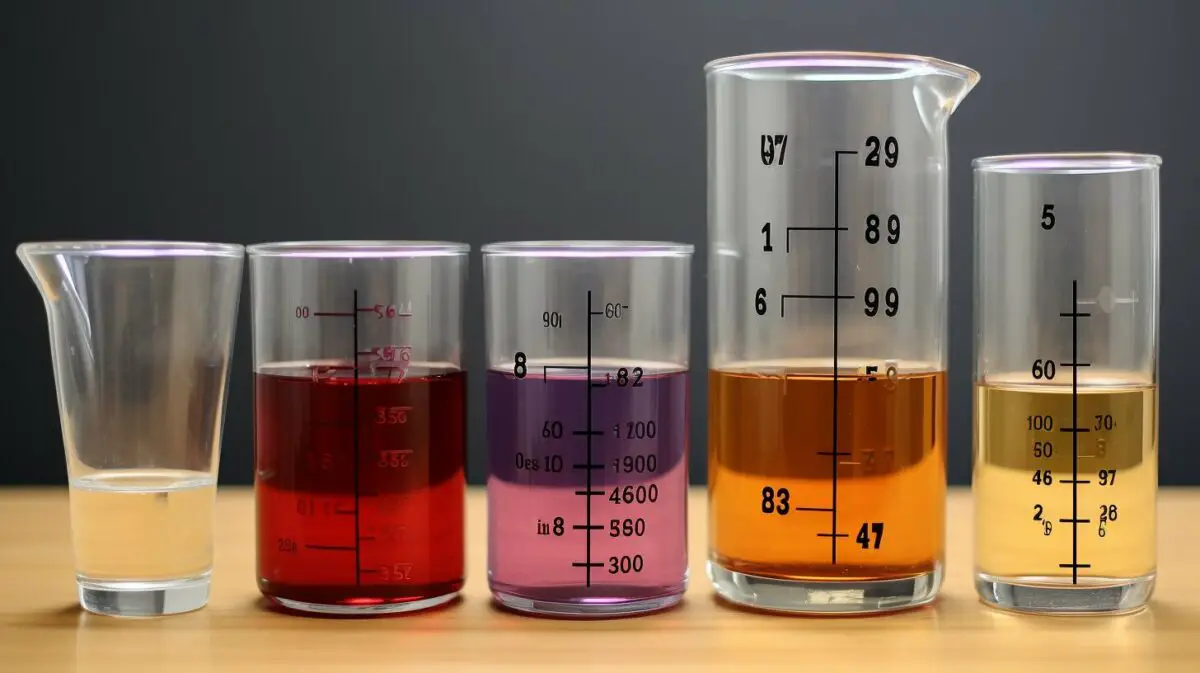
Converting quarts to milliliters is a practical skill to have, especially when dealing with recipes or measurements that use the metric system. Being able to accurately convert between these two units of measurement allows for seamless cooking experiences and ensures accurate results.
Converting Milliliters to Quarts
If you need to convert milliliters to quarts, follow these straightforward steps to determine the accurate equivalent. In the imperial system, a quart is equal to 32 fluid ounces or 946 milliliters. To convert milliliters to quarts, you can divide the number of milliliters by 946. This simple calculation will give you the precise conversion that you need.
For example, let’s say you have a measurement of 2000 milliliters and you want to know the equivalent in quarts. You can divide 2000 by 946, which gives you approximately 2.113 quarts. So, 2000 milliliters is equal to approximately 2.113 quarts.
Converting milliliters to quarts may be necessary when working with recipes or in various scientific and industrial applications. Having a clear understanding of how to perform this conversion will help ensure accuracy and precision in your work. Remember to use the correct formula and divide the number of milliliters by 946 to get the accurate equivalent in quarts.
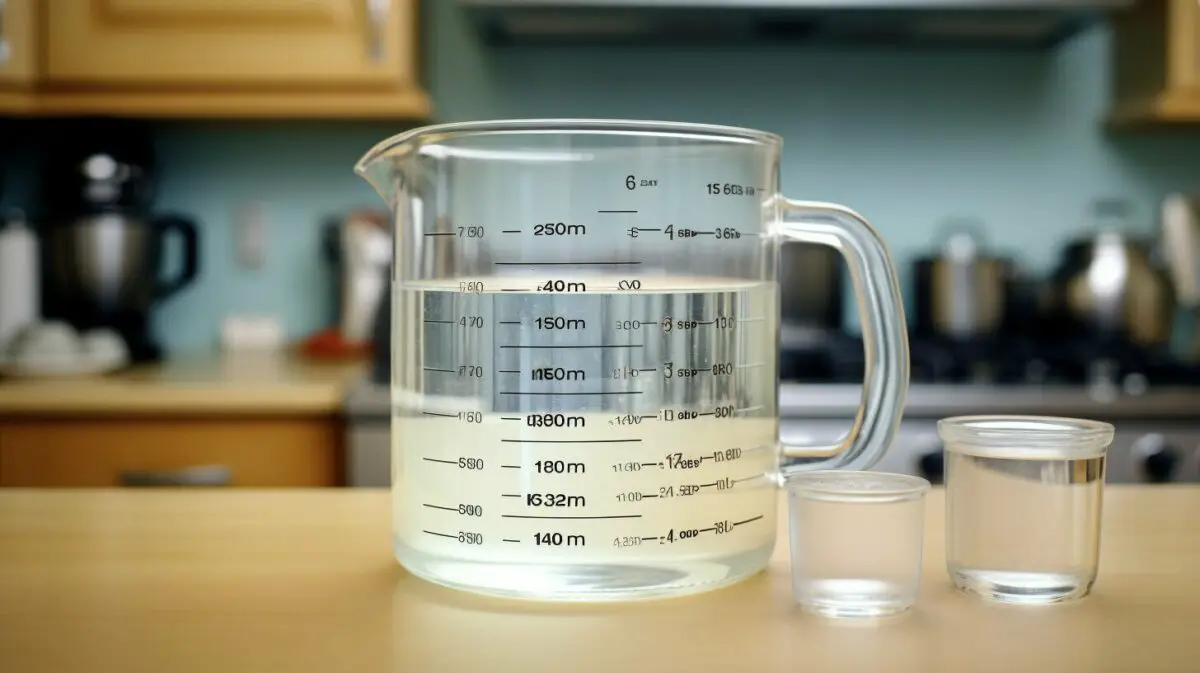
| Milliliters | Quarts |
|---|---|
| 50 | 0.053 |
| 100 | 0.106 |
| 500 | 0.529 |
| 1000 | 1.057 |
| 2000 | 2.113 |
Using the table above, you can quickly reference the conversion of specific milliliter measurements to their equivalent in quarts. For instance, 500 milliliters is approximately 0.529 quarts, and 1000 milliliters is approximately 1.057 quarts. This table provides a handy reference for converting milliliters to quarts in various scenarios.
By following the formula and utilizing the table, you can easily and accurately convert milliliters to quarts. This knowledge will be particularly useful when working with recipes that require precise measurements or in any situation where fluid volume conversions are necessary. Remember that 946 milliliters is equivalent to 1 quart in the imperial system, and you can use this information to perform the conversion effortlessly.
Example Conversion: Milliliters to Quarts
To solidify the concept of converting milliliters to quarts, let’s walk through a practical example together. Imagine you have a recipe that calls for 250 milliliters of liquid, and you want to know how many quarts that is. Using the conversion formula, we can easily calculate the equivalent value:
1 quart = 946 milliliters
250 milliliters ÷ 946 = 0.264 quarts
Therefore, 250 milliliters is approximately equivalent to 0.264 quarts. It’s important to note that this conversion is an approximation, as quarts and milliliters are not evenly divisible. Now that we have a better understanding of how to convert milliliters to quarts, let’s explore some other conversion examples.
Other Conversion Examples:
1,000 milliliters = 1.057 quarts
500 milliliters = 0.529 quarts
100 milliliters = 0.106 quarts
These examples demonstrate that as the number of milliliters decreases, the equivalent value in quarts also decreases. It’s important to refer to a conversion chart or use an online conversion tool for precise measurements in recipes or any other situation where accuracy is crucial.
| Milliliters | Quarts |
|---|---|
| 100 | 0.106 |
| 250 | 0.264 |
| 500 | 0.529 |
| 1,000 | 1.057 |
Keep in mind that these conversion factors only apply to the relationship between milliliters and quarts. When dealing with other units such as liters, gallons, or fluid ounces, different conversion formulas and factors will be needed.
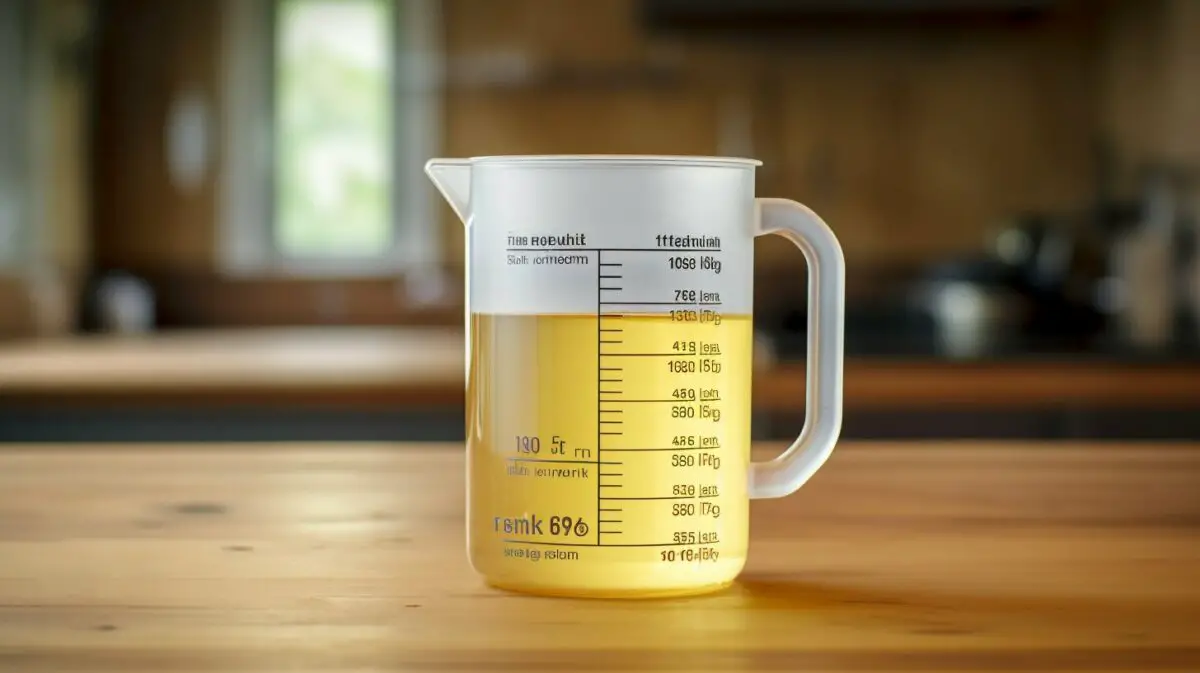
By understanding how to convert milliliters to quarts, you can accurately measure and adjust liquid quantities in your recipes. Remember to always double-check your conversions using reliable resources and tools to ensure precise and delicious results!
Other Conversion Equivalents
In addition to quarts and milliliters, there are several other volume measurement units that you should be familiar with. These units are commonly used in various contexts, including cooking, baking, and scientific calculations. Understanding the conversion ratios between these units can be helpful when following recipes or performing measurements.
Here is a list of some commonly used volume measurement units:
- Liters: A liter is a unit of volume in the metric system. It is equal to 1,000 milliliters or approximately 33.8 fluid ounces.
- Gallons: A gallon is a unit of volume in the imperial system. It is equal to 3.785 liters or approximately 128 fluid ounces.
- Fluid Ounces: A fluid ounce is a unit of volume in the imperial system. There are 8 fluid ounces in a cup and 128 fluid ounces in a gallon.
- Cups: A cup is a unit of volume commonly used in cooking and baking. There are 16 cups in a gallon and 8 fluid ounces in a cup.
- Pints: A pint is a unit of volume in the imperial system. There are 2 pints in a quart and 16 fluid ounces in a pint.
- Tablespoons: A tablespoon is a unit of volume commonly used in cooking. There are 16 tablespoons in a cup and 3 teaspoons in a tablespoon.
- Teaspoons: A teaspoon is a unit of volume commonly used in cooking. There are 48 teaspoons in a cup and 3 teaspoons in a tablespoon.
- Cubic Centimeters: A cubic centimeter is a unit of volume in the metric system. It is equal to 1 milliliter or approximately 0.061 cubic inches.
- Cubic Meters: A cubic meter is a unit of volume in the metric system. It is equal to 1,000 liters or approximately 35.3 cubic feet.
- Cubic Inches: A cubic inch is a unit of volume in the imperial system. There are 231 cubic inches in a gallon and 16.4 cubic centimeters in a cubic inch.
It is important to note that these units can be converted to each other using specific conversion factors. For example, to convert pints to liters, you can multiply the number of pints by 0.473176. To convert cubic centimeters to cubic inches, you can divide the number of cubic centimeters by 16.387.
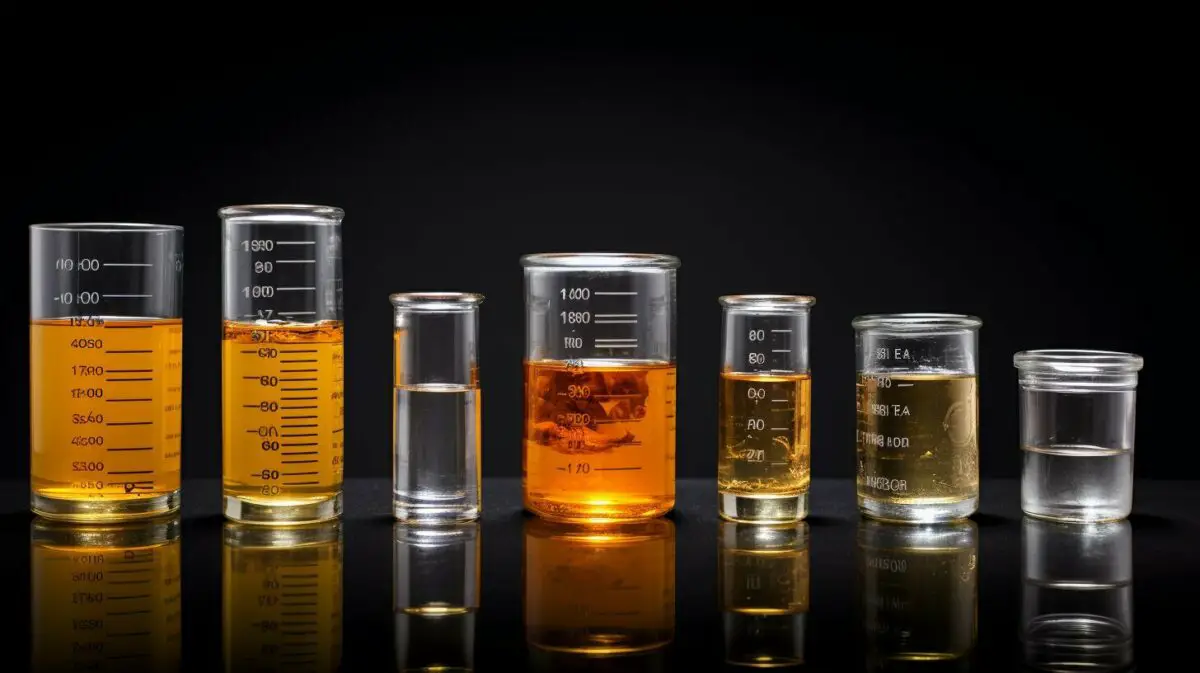
Having a good understanding of these volume measurement units and their conversion equivalents can enhance your ability to accurately measure and convert ingredients or substances in different recipes and scientific experiments. Remember to refer to the appropriate conversion formulas and tables when needed, and make use of online conversion tools for quick and convenient conversions.
| Volume Measurement Unit | Conversion to Quarts | Conversion to Milliliters |
|---|---|---|
| Liters | 1 liter = 1.056688 quarts | 1 liter = 1,000 milliliters |
| Gallons | 1 gallon ≈ 4 quarts | 1 gallon ≈ 3,785 milliliters |
| Fluid Ounces | 1 fluid ounce ≈ 0.03125 quarts | 1 fluid ounce ≈ 29.5735 milliliters |
| Cups | 1 cup ≈ 0.25 quarts | 1 cup ≈ 236.588 milliliters |
| Pints | 1 pint ≈ 0.5 quarts | 1 pint ≈ 473.176 milliliters |
| Tablespoons | 1 tablespoon ≈ 0.0625 quarts | 1 tablespoon ≈ 14.7868 milliliters |
| Teaspoons | 1 teaspoon ≈ 0.0208333 quarts | 1 teaspoon ≈ 4.92892 milliliters |
| Cubic Centimeters | 1 cubic centimeter = 0.00105669 quarts | 1 cubic centimeter = 1 milliliter |
| Cubic Meters | 1 cubic meter ≈ 1,056.69 quarts | 1 cubic meter ≈ 1,000,000 milliliters |
| Cubic Inches | 1 cubic inch ≈ 0.0173168 quarts | 1 cubic inch ≈ 16.3871 milliliters |
Conversion Factors and Formulas
To ensure accuracy and ease in converting between quarts and milliliters, understanding the conversion factors and formulas is essential. In the imperial system, a quart is equal to 32 fluid ounces or 946 milliliters. This knowledge allows us to establish the following conversion factors:
Quart to Milliliter: 1 quart = 946 milliliters
Milliliter to Quart: 1 milliliter = 0.00105668821 quarts
These conversion factors can be used to calculate accurate conversions between quarts and milliliters. When converting quarts to milliliters, simply multiply the number of quarts by 946. Likewise, when converting milliliters to quarts, divide the number of milliliters by 946. Let’s take a look at some examples:
Example 1: Convert 3 quarts to milliliters
3 quarts x 946 milliliters/quart = 2838 milliliters
Example 2: Convert 500 milliliters to quarts
500 milliliters ÷ 946 milliliters/quart = 0.52834467146 quarts
By following these simple formulas, you can easily convert between quarts and milliliters, ensuring accuracy in your measurements.
| Quart | Milliliter |
|---|---|
| 1 | 946 |
| 2 | 1892 |
| 3 | 2838 |
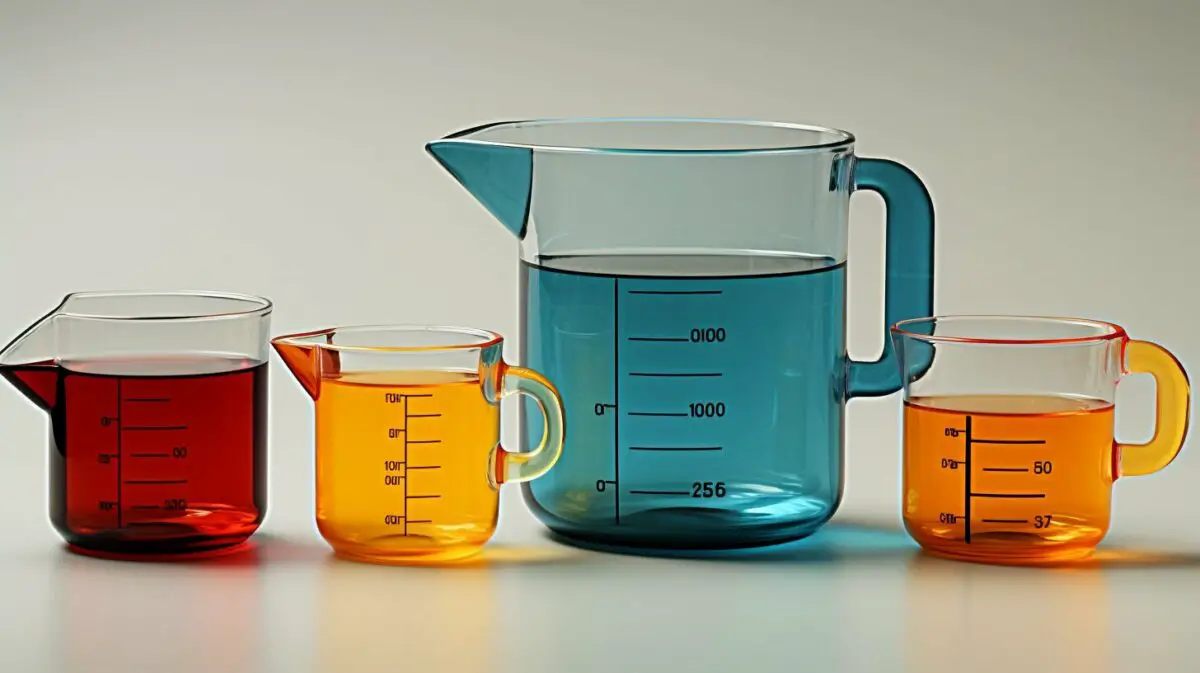
The digital era has made measurement conversions effortless – explore the convenience of online conversion tools for converting quarts to milliliters and back. Whether you’re in the kitchen, at the lab, or simply in need of a quick conversion, these user-friendly tools are just a click away. Say goodbye to complex formulas and manual calculations, and let technology do the work for you.
One popular online conversion tool is the “Quarts to Milliliters Converter”. Simply enter the number of quarts you wish to convert, and it will instantly provide you with the equivalent value in milliliters. This tool is perfect for anyone who needs quick and accurate conversions without the hassle of manual calculations.
To convert milliliters to quarts, you can use the “Milliliters to Quarts Converter”. Just input the number of milliliters you want to convert, and the tool will display the equivalent value in quarts. It’s that easy! No need to remember complex conversion formulas or spend valuable time doing calculations on your own.
By utilizing these online conversion tools, you can save time, eliminate guesswork, and ensure accurate measurements. Whether you’re a culinary enthusiast, a science student, or simply someone who needs to convert quarts to milliliters and vice versa, these tools are a reliable and efficient resource at your fingertips.
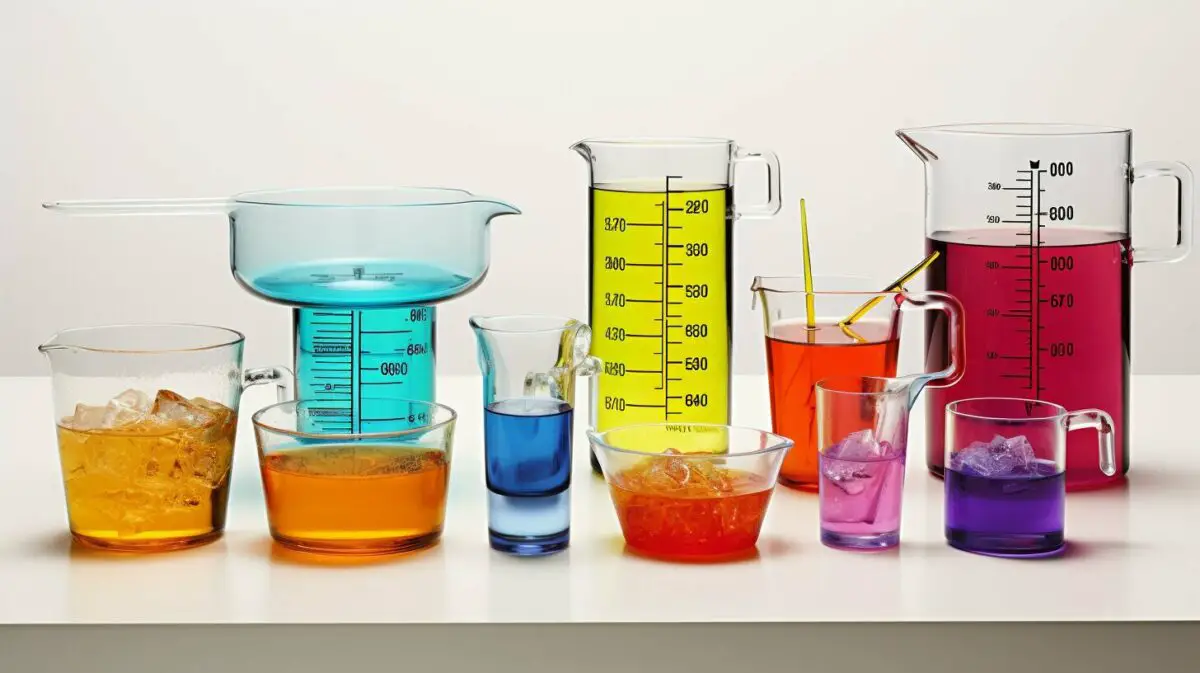
| Quarts | Milliliters |
|---|---|
| 1 | 946 |
| 2 | 1892 |
| 3 | 2838 |
Table 1: Conversion table for quarts to milliliters
Converting Other Units to Milliliters
Milliliters are a commonly used unit in the metric system – learn how to convert other units to milliliters for precise measurements. Whether you’re working in the kitchen or conducting scientific experiments, it’s essential to understand how to transform different units into milliliters. Here’s a comprehensive guide to help you compute, change, and translate various measurements into milliliters.
Liters to Milliliters Conversion
One liter is equivalent to 1000 milliliters. To convert liters to milliliters, you can multiply the number of liters by 1000. For example, if you have 2 liters, the conversion would be: 2 liters x 1000 = 2000 milliliters.
Cups to Milliliters Conversion
When converting cups to milliliters, it’s important to note that one cup is equal to approximately 236.6 milliliters. You can use this conversion factor to compute the milliliter equivalent of a given number of cups. For instance, if you have 3 cups, the conversion would be: 3 cups x 236.6 = 709.8 milliliters.
Tablespoons to Milliliters Conversion
To convert tablespoons to milliliters, you can use the conversion factor of 14.79 milliliters per tablespoon. For example, if you have 5 tablespoons, the conversion would be: 5 tablespoons x 14.79 = 73.95 milliliters.
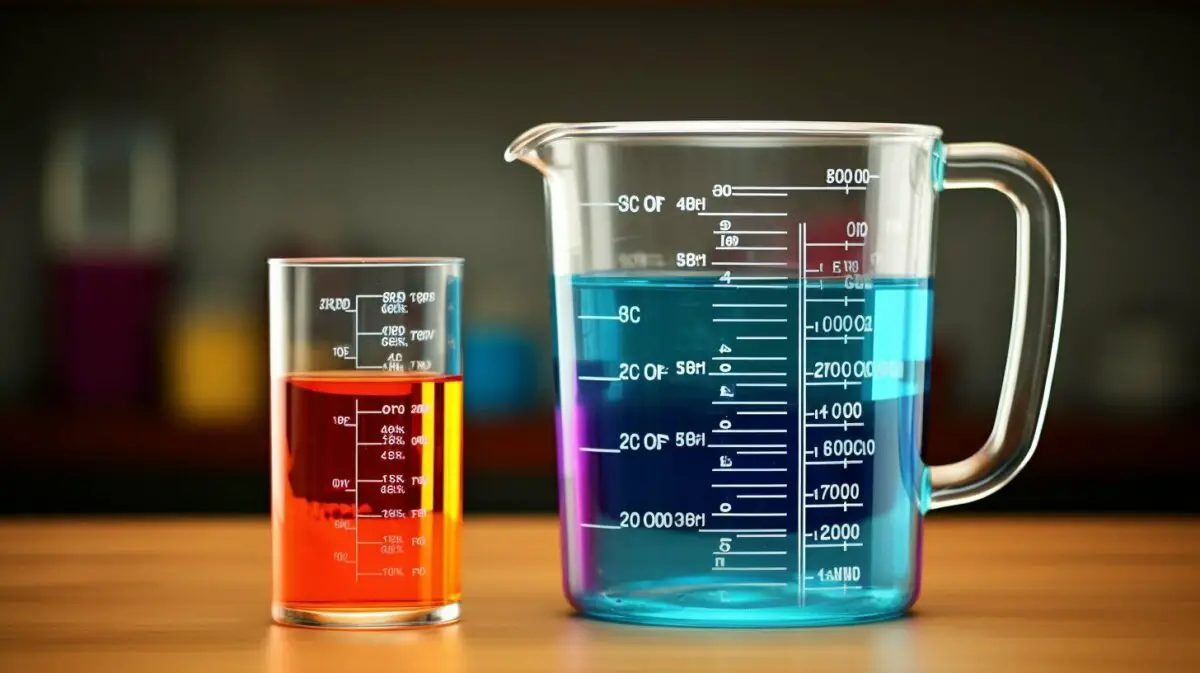
| Unit | Conversion to Milliliters |
|---|---|
| Liters | Multiply by 1000 |
| Cups | Multiply by 236.6 |
| Tablespoons | Multiply by 14.79 |
By using these conversion factors and formulas, you can easily transform other units into milliliters. Whether you need to convert liters, cups, or tablespoons, understanding these conversions allows for precise measurements in any situation.
Converting Milliliters to Other Units
Knowing how to convert milliliters to other units can be immensely helpful in various cooking and baking scenarios – let’s explore these conversions. Whether you need to adjust a recipe or measure ingredients accurately, understanding how milliliters relate to other common volume measurements is essential. Let’s take a look at some commonly used units and their equivalent values in milliliters.
Here is a table summarizing the conversion of milliliters to other units:
| Unit | Equivalent Value in Milliliters |
|---|---|
| Liters | 1,000 milliliters |
| Cups | 236.59 milliliters |
| Pints | 473.18 milliliters |
| Fluid Ounces | 29.57 milliliters |
| Tablespoons | 14.79 milliliters |
| Teaspoons | 4.93 milliliters |
| Cubic Centimeters | 1 milliliter |
| Cubic Meters | 1,000,000 milliliters |
| Cubic Inches | 16.39 milliliters |
These conversions can be handy when following international recipes or when working with specific measurement requirements. Remember, precision in measurements is crucial for culinary success, so feel free to refer back to this table whenever you need to transform milliliters into other units.
Example Conversion: Milliliters to Cups
I needed to convert 500 milliliters of milk to cups for a cake recipe. By referring to the table, I found that 1 cup is equal to approximately 236.59 milliliters. Dividing 500 milliliters by the equivalent value, I determined that I needed roughly 2.11 cups of milk. This allowed me to adjust the recipe accordingly and achieve the desired consistency in my cake batter.
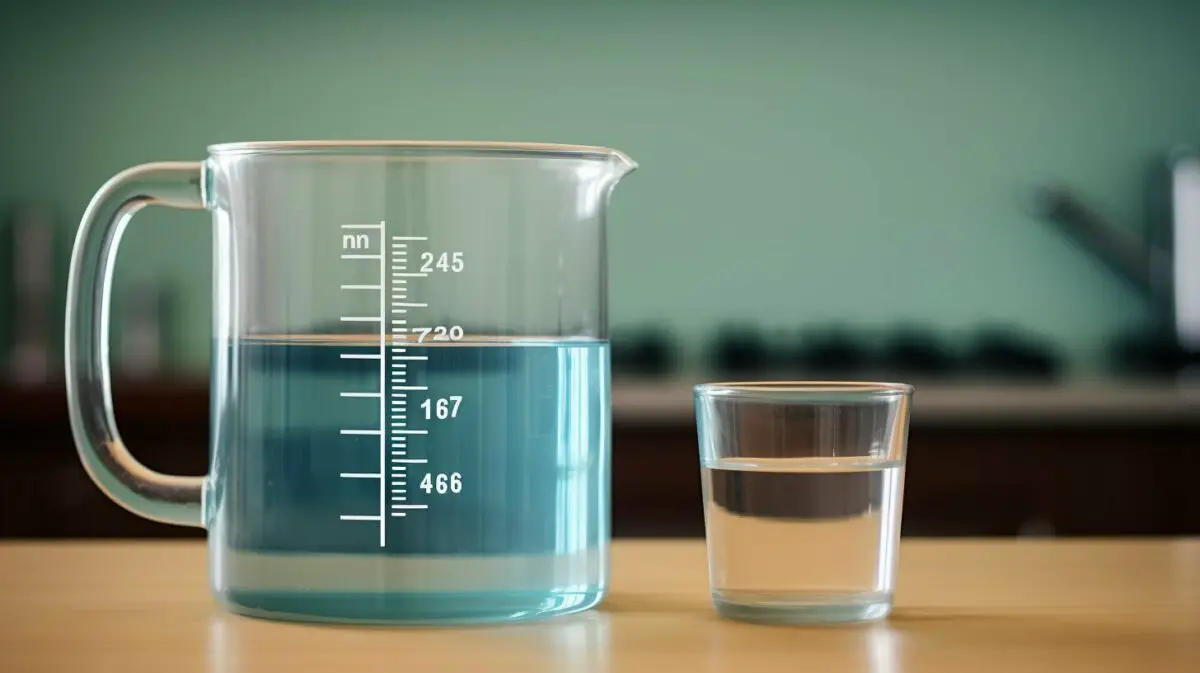
By understanding conversions like these, you can confidently tackle any cooking or baking project that requires precise measurements. Whether you’re scaling a recipe up or down, converting milliliters to other units will ensure your culinary creations turn out just right.
Exploring Different Measurement Systems
The metric and imperial systems offer diverse measurement units – discover the significance of quarts and milliliters in these systems.
In the metric system, volume is measured in liters and milliliters. A liter is the base unit of volume, and it is equivalent to 1,000 milliliters. This system is widely used around the world and is based on powers of ten, making conversions between units relatively straightforward. For example, to convert from milliliters to liters, you simply divide the number of milliliters by 1,000.
On the other hand, the imperial system, commonly used in the United States, uses quarts, gallons, and fluid ounces as its primary units of volume measurement. A quart is equal to 32 fluid ounces or approximately 946 milliliters. It is often used in cooking and recipes, allowing for precise measurements in the kitchen.
To convert quarts to milliliters in the imperial system, you can multiply the number of quarts by 946. Conversely, to convert milliliters to quarts, you can divide the number of milliliters by 946. These conversion formulas provide a convenient way to switch between the two units of measurement.
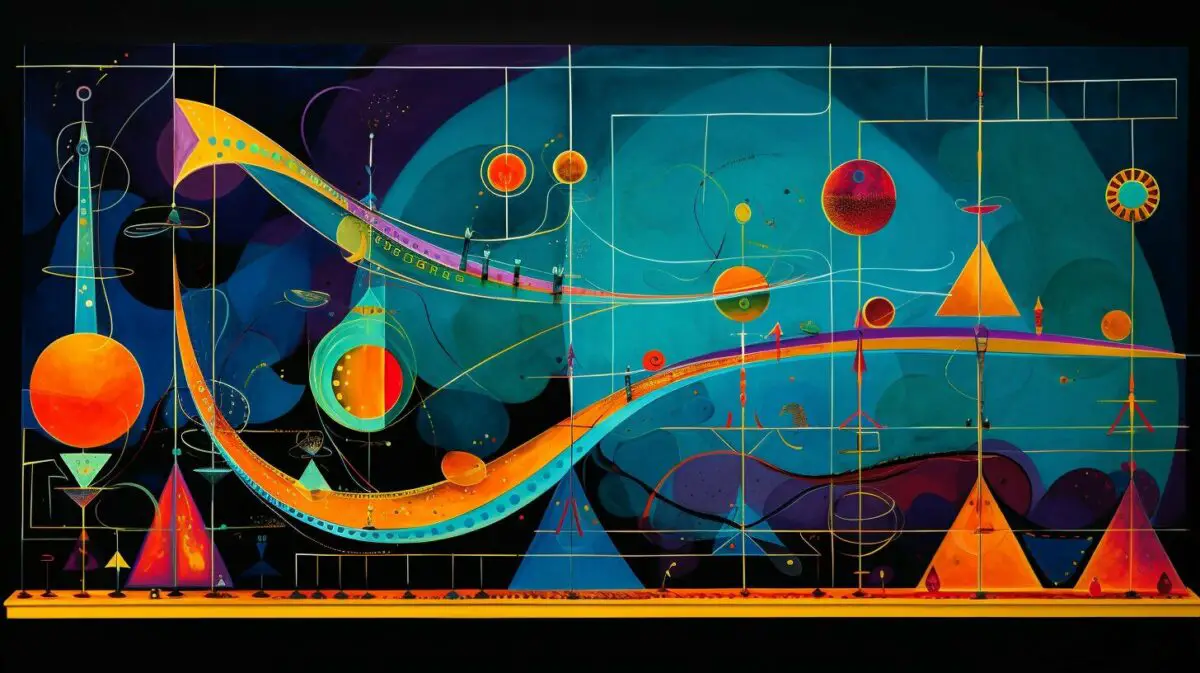
Understanding the metric and imperial systems and their measurement units is essential for various fields, including science, cooking, and everyday life. By grasping the significance of quarts and milliliters, you can navigate these systems with ease and accuracy.
| Metric System | Imperial System |
|---|---|
| Liters | Quarts |
| Milliliters | Fluid ounces |
| – | Gallons |
Table: A comparison of volume measurement units in the metric and imperial systems.
The Importance of Accurate Measurements in Cooking
As a master chef, you understand the criticality of precise measurements in cooking – discover why converting between quarts and milliliters is vital for culinary success. Whether you’re whipping up a delectable sauce, baking a mouth-watering cake, or simmering a savory stew, accurate measurements play a crucial role in achieving the perfect balance of flavors and textures.
Conversions between quarts and milliliters enable you to seamlessly navigate recipes from different regions and ensure consistency in your culinary creations. With the ability to convert between these two volume measurements, you can confidently adapt international recipes to suit your personal preference and serving size.
To put the accuracy into perspective, a quart in the imperial system is equal to 32 fluid ounces or 946 milliliters. By understanding this conversion, you can easily follow recipes and make precise adjustments to achieve your desired results.
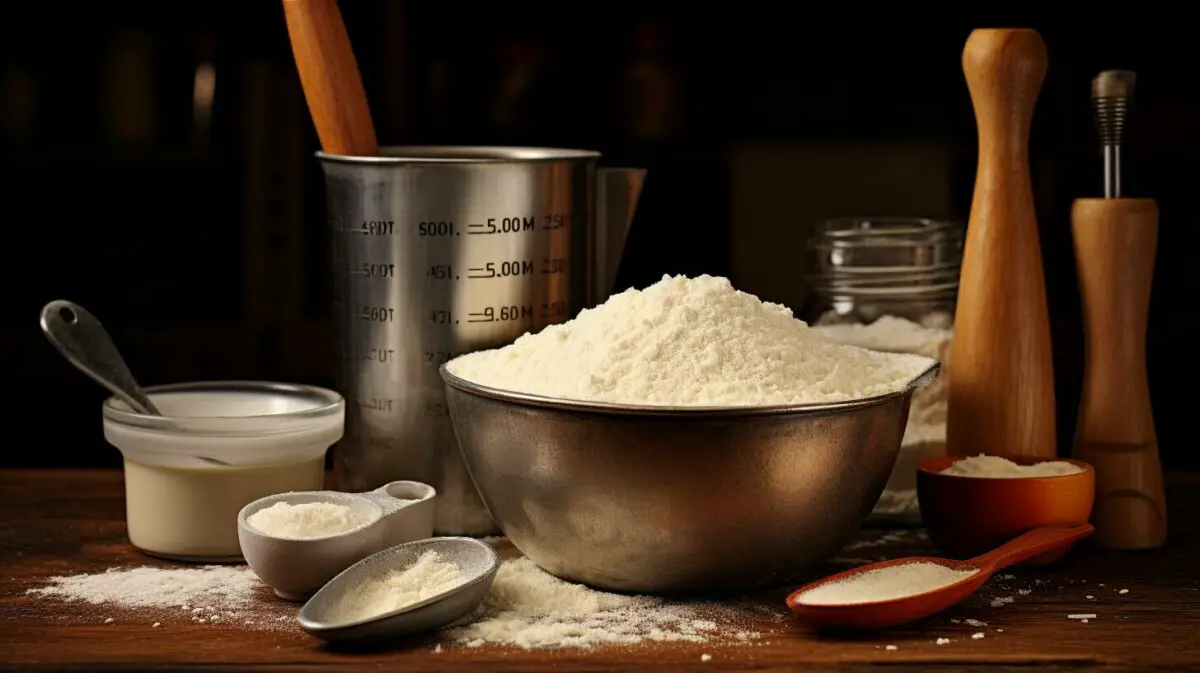
To simplify your culinary endeavors further, utilize conversion tables and formulas that outline the relationship between quarts, milliliters, and other common volume units. These resources serve as valuable references, enabling you to quickly convert measurements and maintain accuracy in your cooking.
| Measurement | Quarts | Milliliters |
|---|---|---|
| 1 cup | 0.25 | 237 |
| 1 pint | 0.5 | 473 |
| 1 liter | 1.06 | 1000 |
With these conversion values at your fingertips, you can confidently convert any measurement needed in your culinary adventures. From teaspoons to gallons, having accurate conversions in your arsenal allows you to explore a wide range of recipes and experiment with confidence.
Remember, precision in cooking extends beyond flavor. It affects the overall texture, appearance, and consistency of your dishes. So, embrace the convenience and accuracy of converting between quarts and milliliters, and elevate your culinary skills to new heights.
Conclusion – How Many Milliliters in a Quart
In conclusion, understanding the conversion between quarts and milliliters is essential for accurate measurements in various culinary endeavors. Whether you’re following a recipe from another country or need to switch between the metric and imperial systems, knowing how to convert between quarts and milliliters ensures that you can accurately measure liquids and achieve the desired results in your cooking.
In the imperial system, a quart is equal to 32 fluid ounces or 946 milliliters. To convert quarts to milliliters, simply multiply the number of quarts by 946. For example, if you have 2 quarts of liquid that you need to convert to milliliters, you would multiply 2 by 946 to get 1892 milliliters.
On the other hand, if you have milliliters and need to convert them to quarts, you can divide the number of milliliters by 946. For instance, if you have 1000 milliliters of liquid and want to convert it to quarts, you would divide 1000 by 946, resulting in approximately 1.06 quarts.
By mastering the conversion between quarts and milliliters, you can easily adapt recipes, measure ingredients accurately, and ensure consistent results in your cooking. So next time you come across a recipe that uses quarts or milliliters, you’ll have the knowledge and confidence to convert between the two seamlessly. Happy cooking!
FAQ – How Many Milliliters in a Quart
Q: How many milliliters are in a quart?
A: In the imperial system, a quart is equal to 32 fluid ounces or 946 milliliters.
Q: How do I convert quarts to milliliters?
A: To convert quarts to milliliters, simply multiply the number of quarts by 946.
Q: How do I convert milliliters to quarts?
A: To convert milliliters to quarts, divide the number of milliliters by 946.
Q: What are quarts and milliliters?
A: Quarts and milliliters are units of measurement used to quantify liquid volume. Quarts are part of the imperial system, while milliliters are part of the metric system.
Q: How do quarts and milliliters relate to each other?
A: One quart is equivalent to 946 milliliters. This means that 1 quart contains the same amount of liquid as 946 milliliters.
Our Friends:
- https://www.inchcalculator.com/convert/quart-to-milliliter/
- https://www.metric-conversions.org/volume/us-liquid-quarts-to-milliliters.htm
Related Recipes:
 How Many Cups Are in a Liter: Unlocking the Mystery
How Many Cups Are in a Liter: Unlocking the Mystery
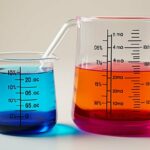 How Many Milliliters in an Ounce? (Perfect Measurement Conversion Guide)
How Many Milliliters in an Ounce? (Perfect Measurement Conversion Guide)
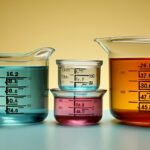 How Many Ounces Are in a Quart? (Ultimate Measurement Conversion Guide)
How Many Ounces Are in a Quart? (Ultimate Measurement Conversion Guide)
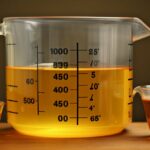 How Many Ounces Are in 750 ml? (Measurement Conversion Guide)
How Many Ounces Are in 750 ml? (Measurement Conversion Guide)
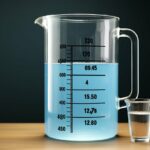 How Many Milliliters in a Gallon? (Perfect Measurement Conversion Guide)
How Many Milliliters in a Gallon? (Perfect Measurement Conversion Guide)
 How Many Cups Are in a Quart? (Perfect Measurement Conversion Guide)
How Many Cups Are in a Quart? (Perfect Measurement Conversion Guide)
 How Many Quarts in a Liter? (Perfect Measurement Conversion Guide)
How Many Quarts in a Liter? (Perfect Measurement Conversion Guide)
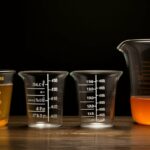 How Many Milliliters in a Pint? (Measurement Conversion Guide)
How Many Milliliters in a Pint? (Measurement Conversion Guide)


